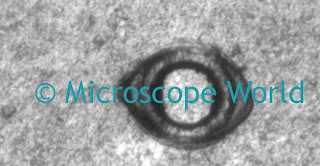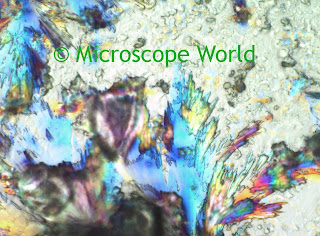The best and most accurate way to make measurements with your
microscope is by using an
eyepiece reticle that has been calibrated with a
stage micrometer.
Eyepiece reticles are available in a variety of options for measuring including grids, rulers, cross lines and even
specialized reticles for measuring particles or thickness of materials. An eyepiece reticle is a circular piece of glass with a ruler or measuring symbol etched on the glass. The reticle is held in the microscope eyepiece with a retaining ring. When looking through the microscope the reticle image is imposed upon the specimen viewed through the microscope.
In order to make accurate measurements, you need to make a calculation based on the microscope objective lens used. The distance between the lines on the reticle changes depending on which objective lens was used. The formula looks like this:
Reticle division / Objective Lens = Distance Between Lines on Reticle
An example:
If you are using a 10mm reticle with 100 divisions the reticle division = 0.1mm
So the formula looks like this when using the 4x objective lens:
0.1 / 4 = 0.025mm is the distance between each line.
If you were using the 100x objective lens:
0.1 / 100 = 0.001mm is the distance between each line.
Learn more about making accurate measurements here. And for information on calibrating your microscope using a stage micrometer
click here.




































